

Famous Scientists. 16 Common Product Combinations You Should Never Mix. BadChemicalMixes.pdf. Common Household Chemicals - Dangerous Mixtures. Updated December 04, 2014.
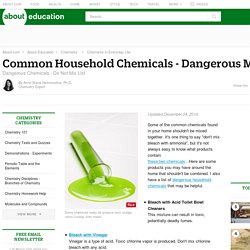
Some of the common chemicals found in your home shouldn't be mixed together. It's one thing to say "don't mix bleach with ammonia", but it's not always easy to know what products contain these two chemicals . Here are some products you may have around the home that shouldn't be combined. I also have a list of dangerous household chemicals that may be helpful. Chlorine bleach is sometimes called “ sodium hypochlorite ” or “hypochlorite.” Read the labels of products in your home and following instructions for proper use. Safety-in-the-elementary-school-science-classroom.pdf. Lab Safety_Handout_PDF. Glossary. Lab safety rules.
Teaching Science and Technology in the Context of Societal and Personal Issues. Introduction From health to climate change and from bioethics to energy, a myriad of personal and societal issues requires citizens to make informed decisions based on science and technology.
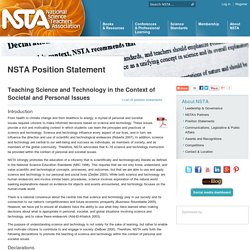
Global Connections . Science and Technology. Cellular phones, for example, are increasingly popular in the Middle East, providing telephone access in more remote communities as well as in crowded urban areas.
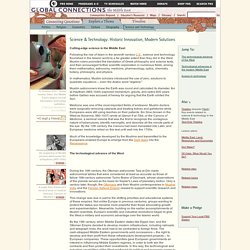
Wireless service bypasses the difficult and expensive requirements for laying out and maintaining telephone cables. Satellite television news stations like Al-Jazeera provide new and varied sources of information to people in the Middle East who once had access only to government-controlled media. The Internet may have a similar effect. Internet cafes have sprung up in major cities and in regional centers throughout the Middle East, providing access to news and information for people who cannot afford to buy a computer themselves.
In some nations, however, the government is the only Internet provider and may censor the available content. Oil-poor countries do not have the economic resources to take advantage of these new technologies. Back to top Related sites Related topics Economics: It's More Than Oil Related maps. What is the Correlation of Science with other Subjects? Correlation of Science with other Subjects As known that for over all development of the students, various subjects are being included in the curriculum.
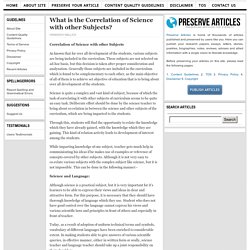
These subjects are not selected on ad-hoc basis, but this decision is taken after proper consideration and analysation. Generally those subjects are included in the curriculum which is found to be complementary to each other, as the main objective of all of them is to achieve set objective of education that is to bring about over all development of the students. Science Tools. Steps of the Scientific Method. Please ensure you have JavaScript enabled in your browser.
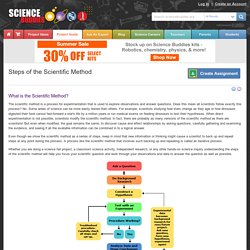
If you leave JavaScript disabled, you will only access a portion of the content we are providing. <a href="/science-fair-projects/javascript_help.php">Here's how. </a> What is the Scientific Method? The scientific method is a process for experimentation that is used to explore observations and answer questions. Even though we show the scientific method as a series of steps, keep in mind that new information or thinking might cause a scientist to back up and repeat steps at any point during the process. Whether you are doing a science fair project, a classroom science activity, independent research, or any other hands-on science inquiry understanding the steps of the scientific method will help you focus your scientific question and work through your observations and data to answer the question as well as possible.
Educator Tools for Teaching the Scientific Method. What Is a Controlled Experiment? - Definition and Example. Updated December 05, 2014.

Question: What Is a Controlled Experiment? One of the most common types of experiment is a controlled experiment. Here is a look at what a controlled experiment is and why this type of experiment is so popular in science. Answer: A controlled experiment is one in which everything is held constant except for one variable. Usually a set of data is taken for a control group, which is commonly the normal or usual state, and one or more other groups are examined, where all conditions are identical to the control group and each other except this one variable. What is Scientific Investigation? - Definition, Steps & Examples. Inquiry_doing-science.pdf. Science Timeline Marks in the evolution of science. Www.bridge-online.cz/aitom/upload/maturita/temata/38_science_and_technology.pdf. History of science. Models in Science. 1.

Semantics: Models and Representation Models can perform two fundamentally different representational functions. On the one hand, a model can be a representation of a selected part of the world (the ‘target system’). Depending on the nature of the target, such models are either models of phenomena or models of data. On the other hand, a model can represent a theory in the sense that it interprets the laws and axioms of that theory. 1.1 Representational models I: models of phenomena Many scientific models represent a phenomenon, where ‘phenomenon’ is used as an umbrella term covering all relatively stable and general features of the world that are interesting from a scientific point of view.